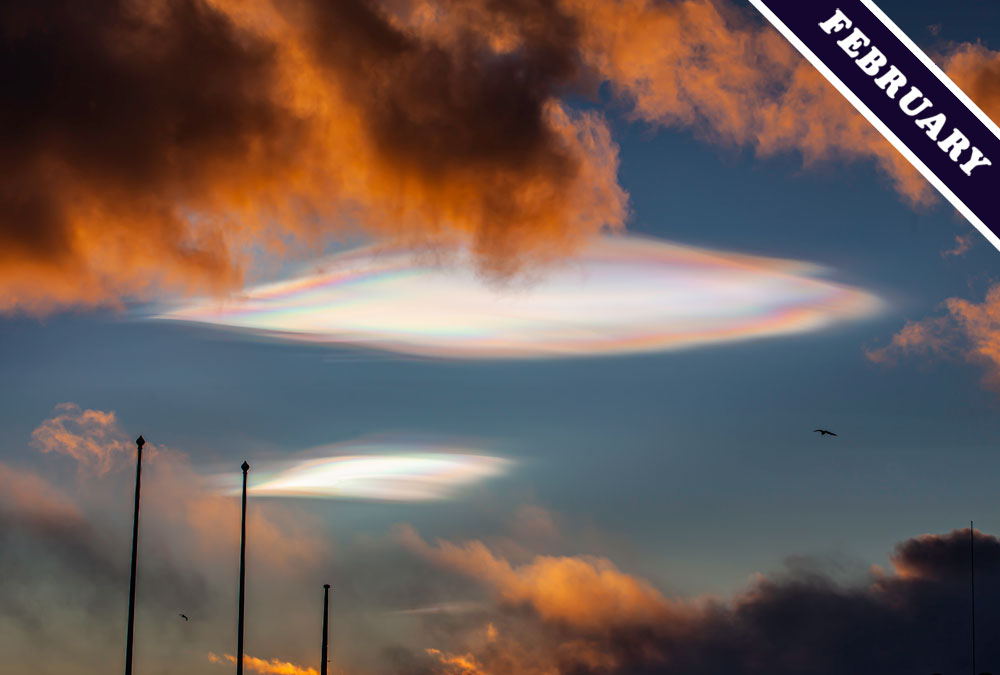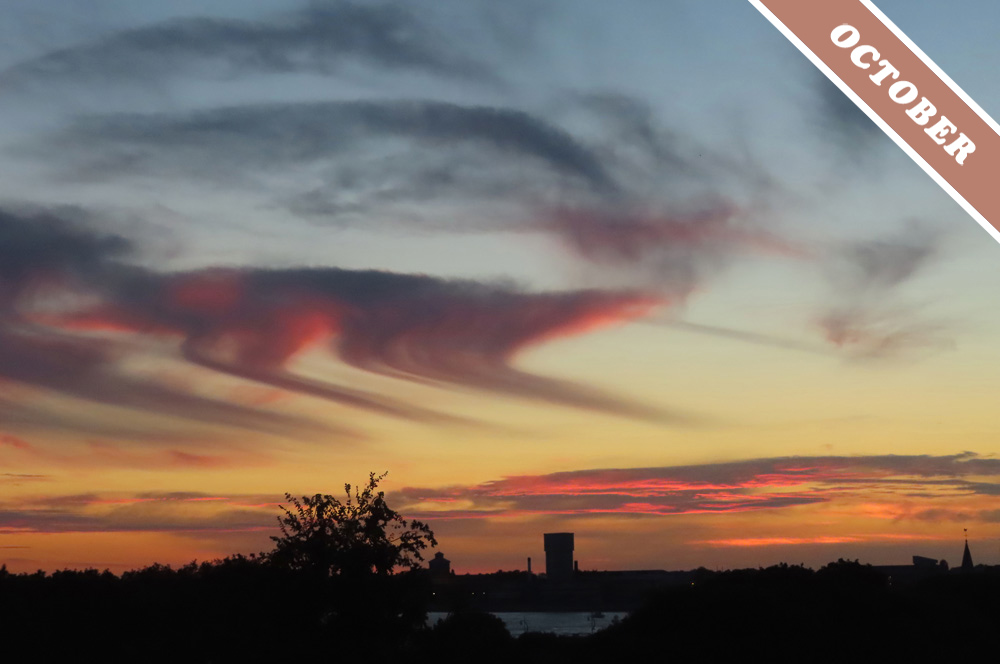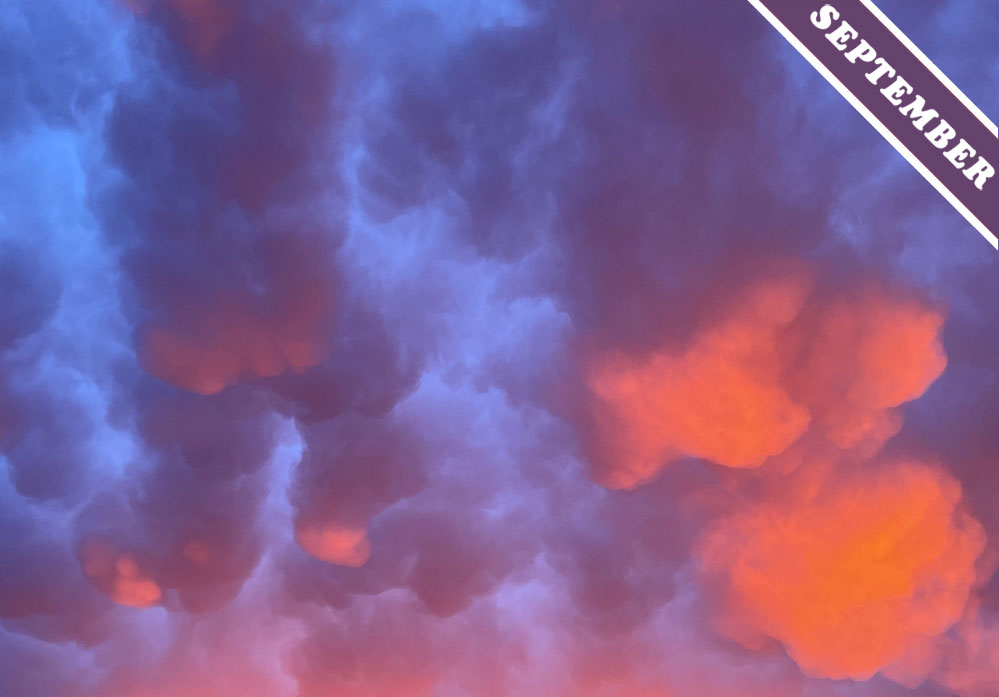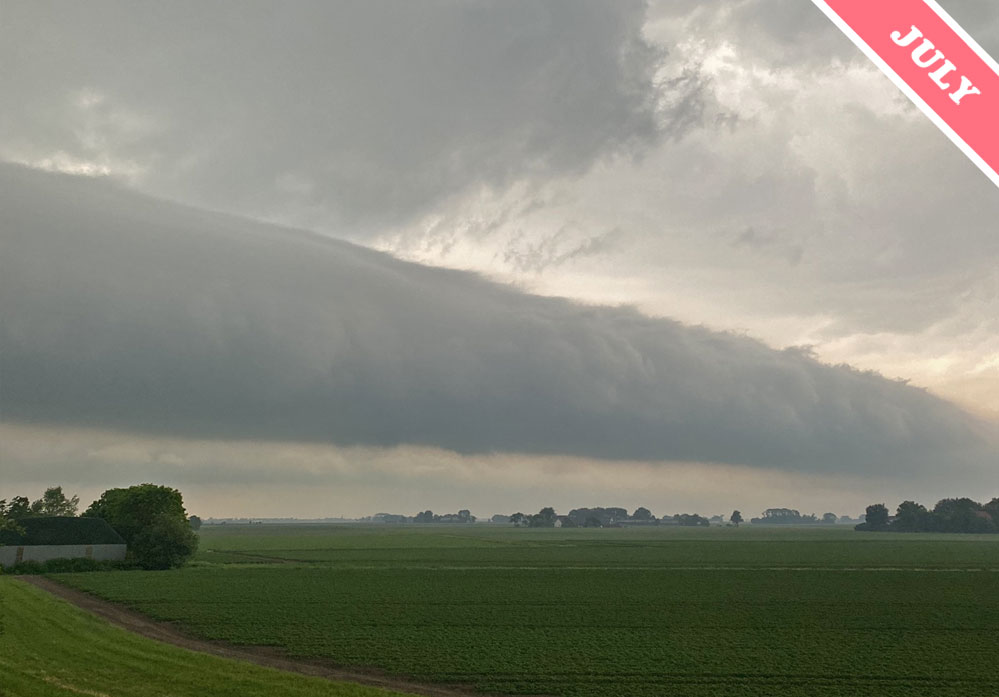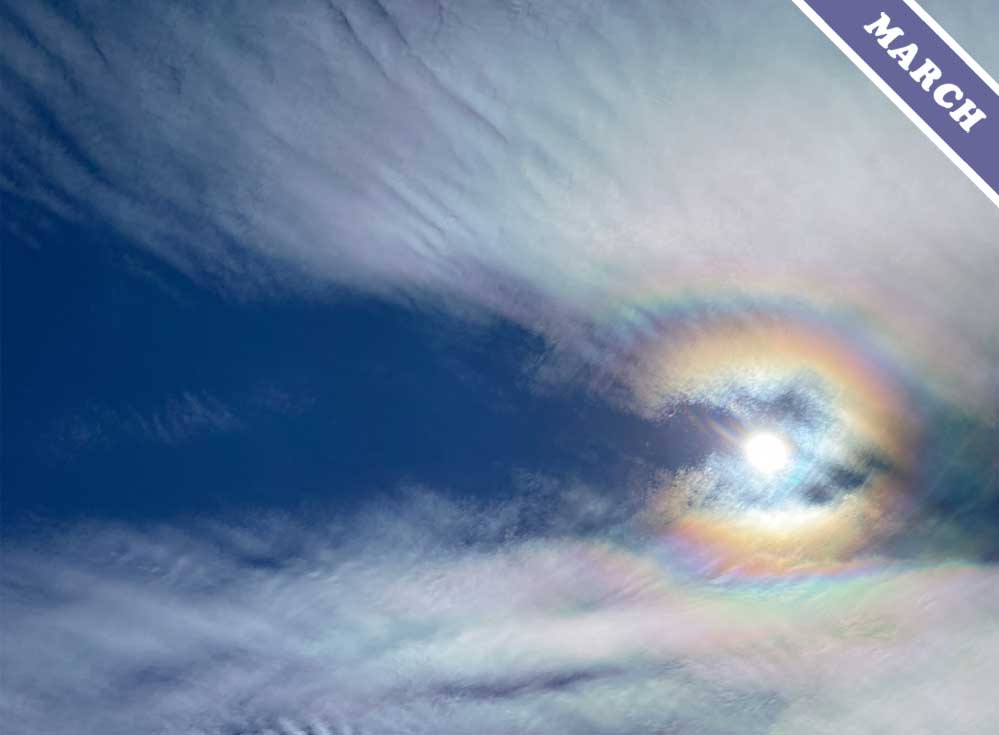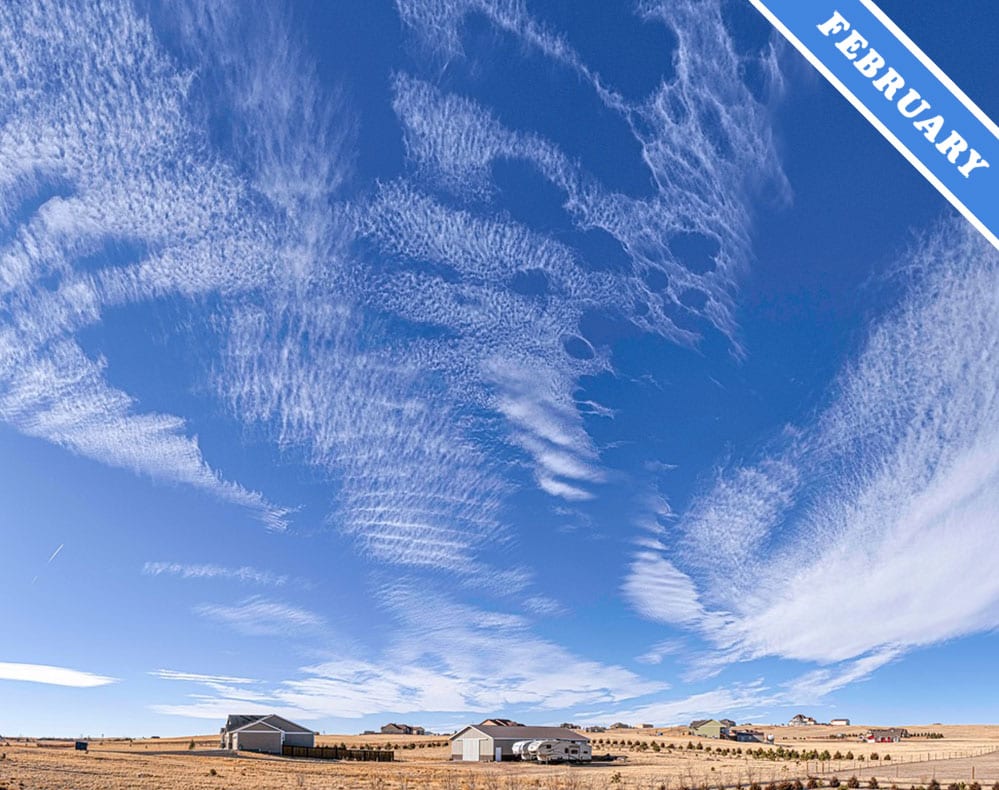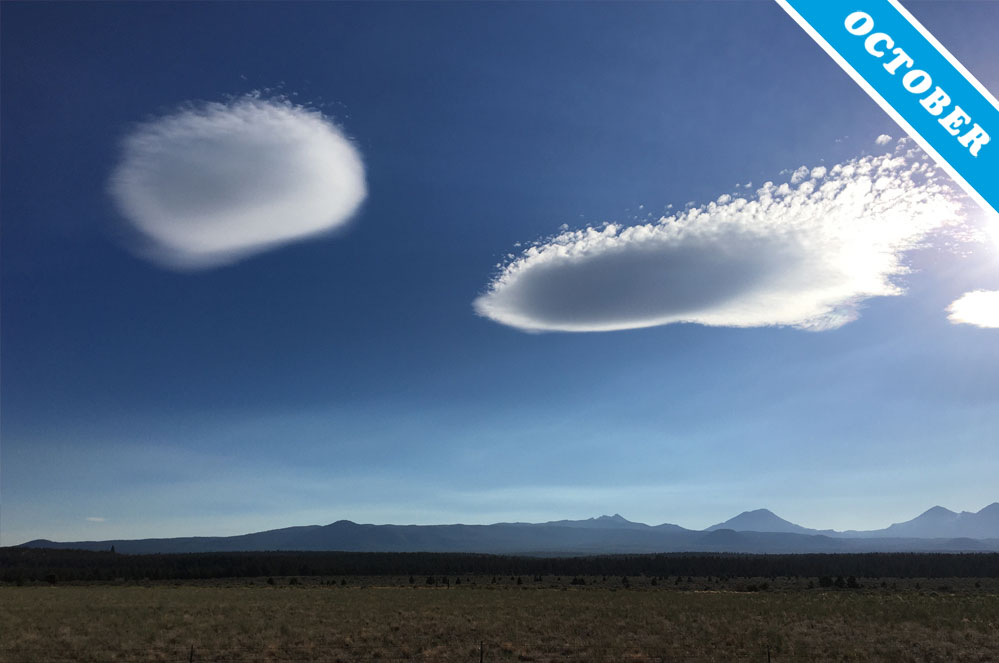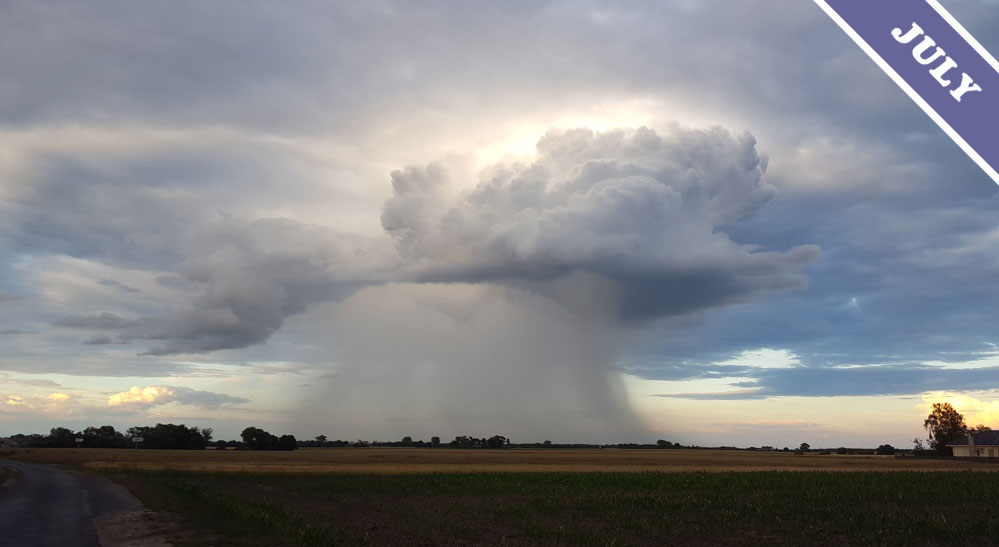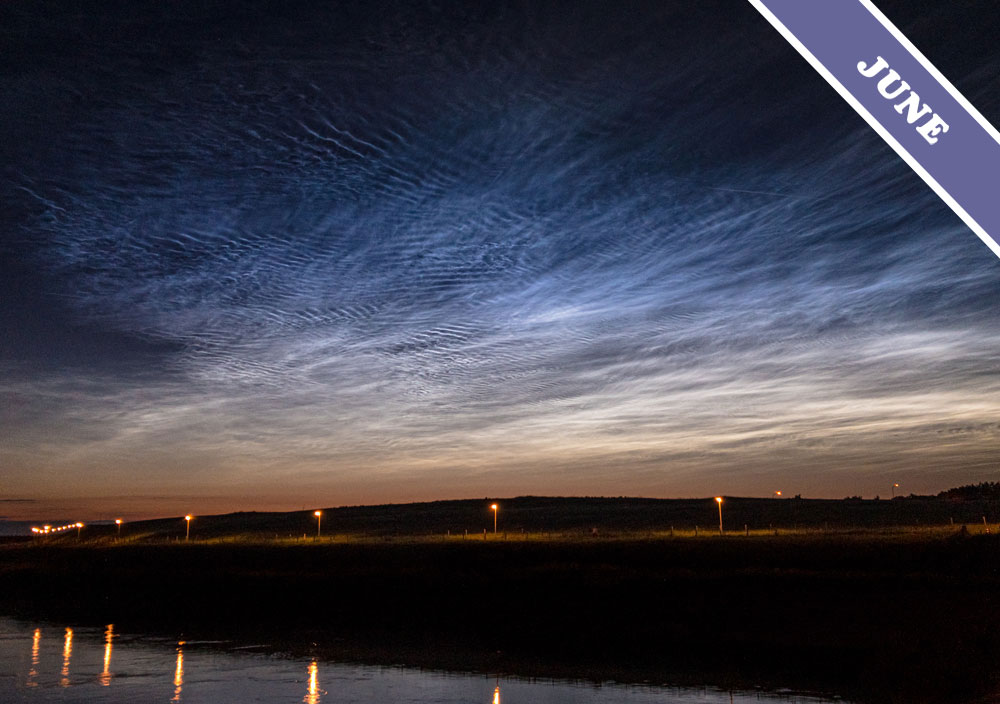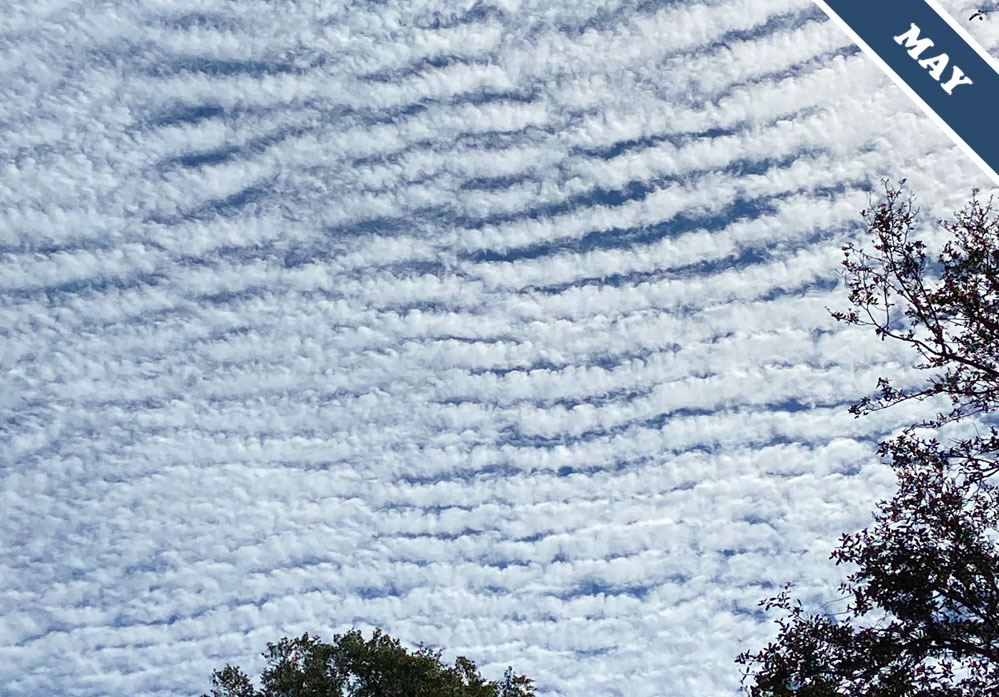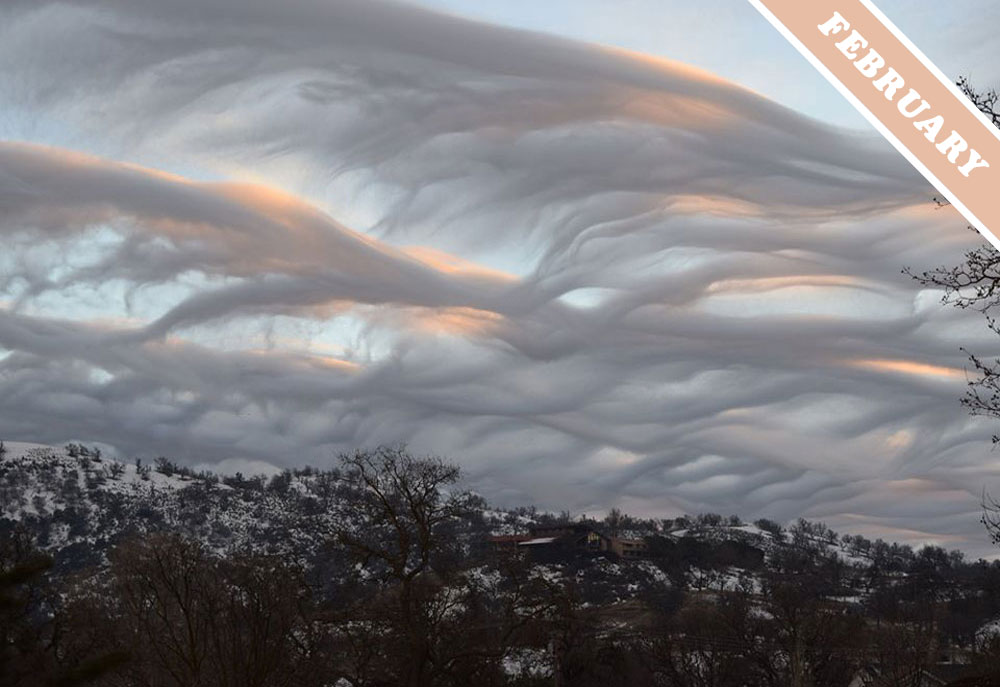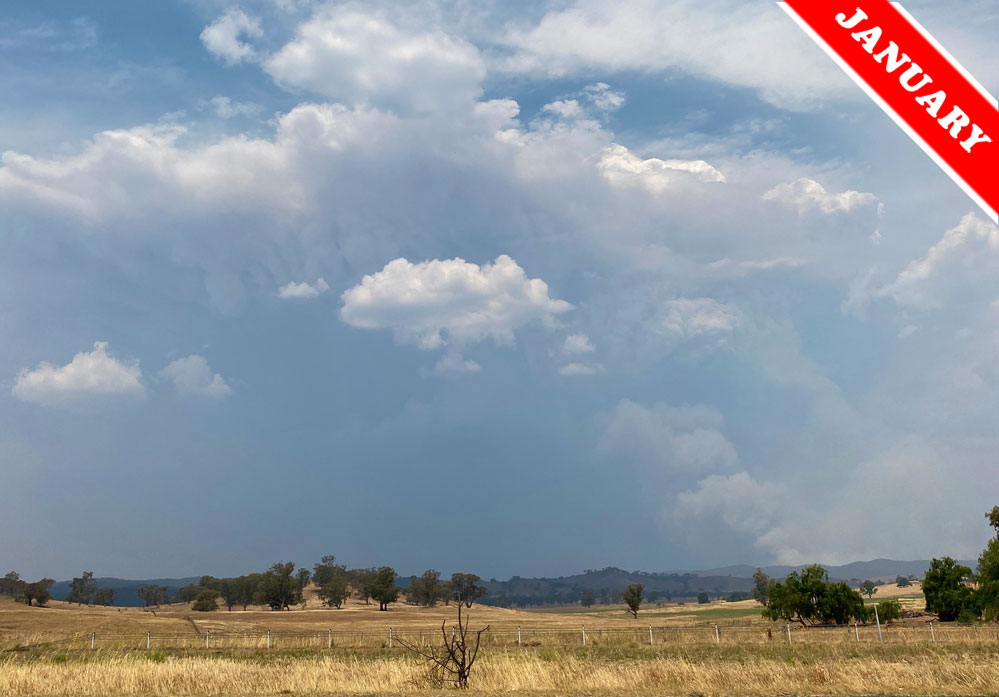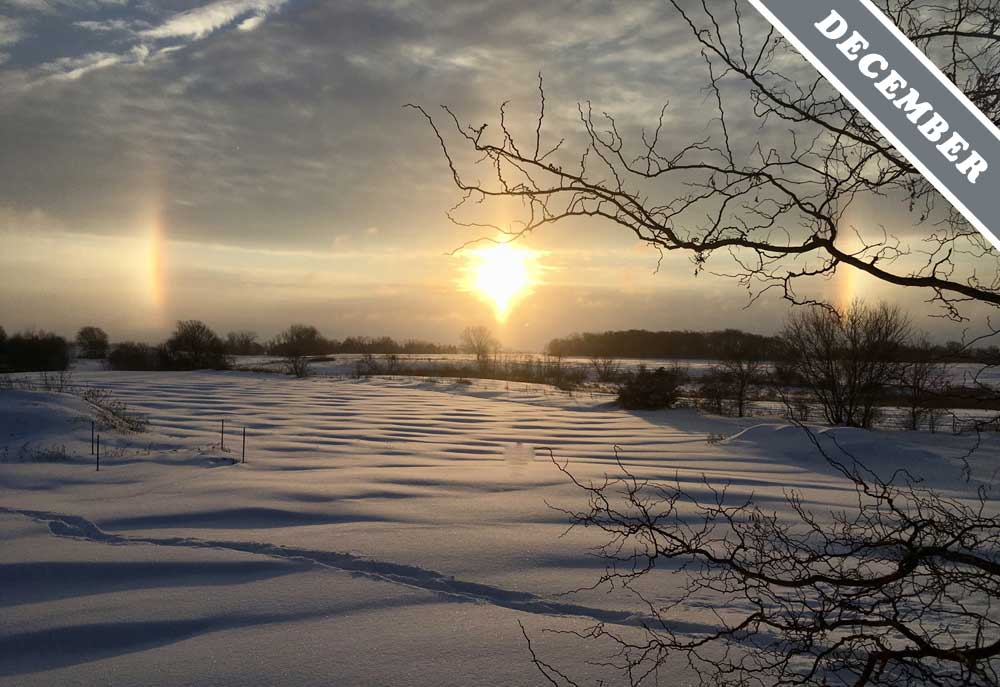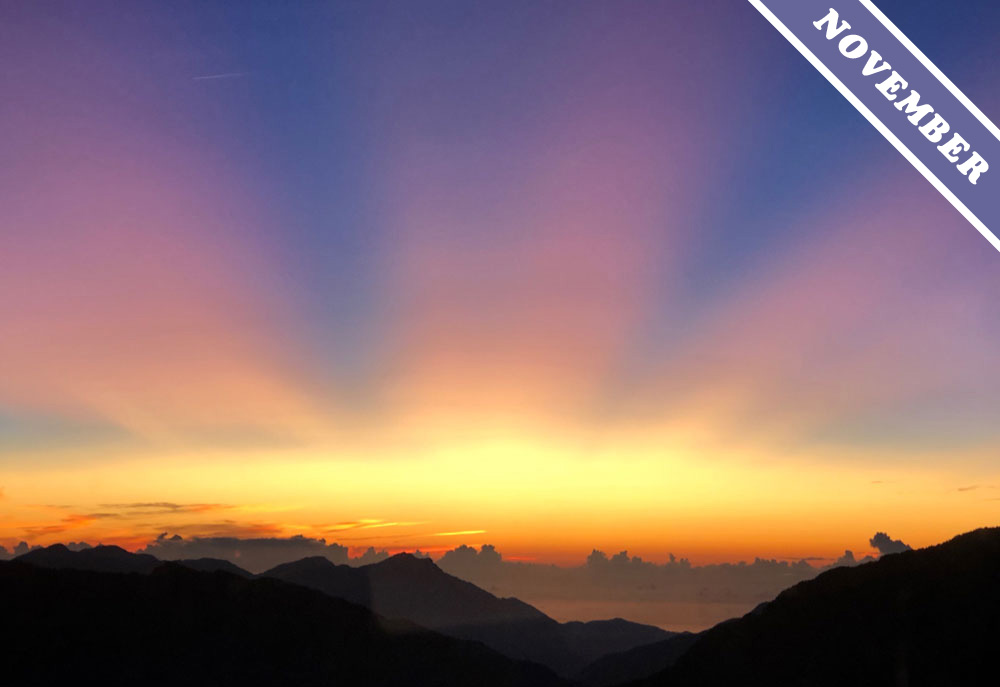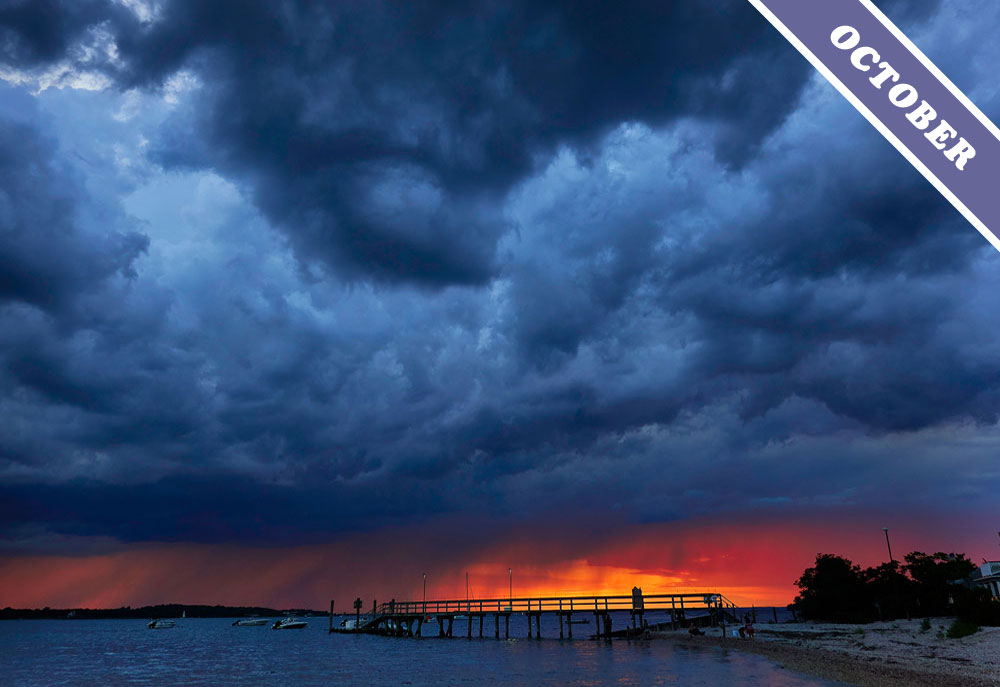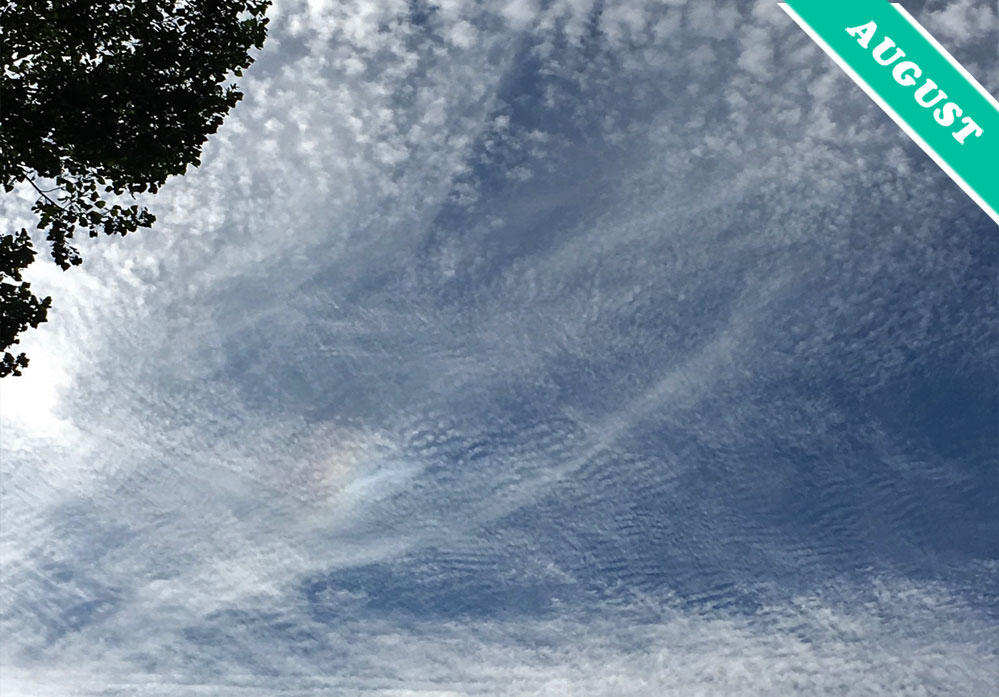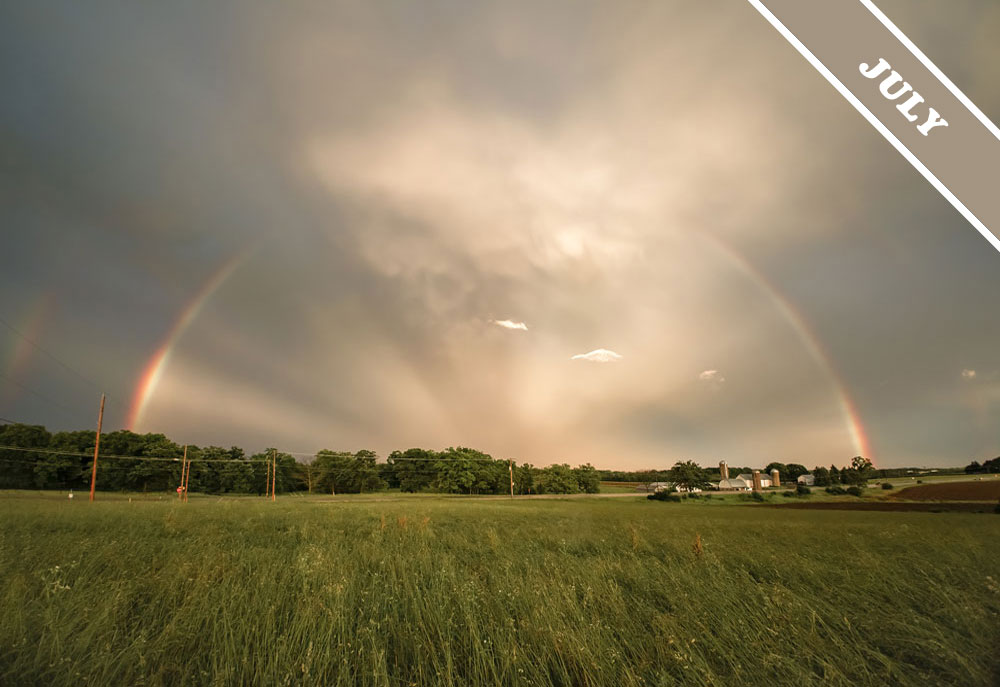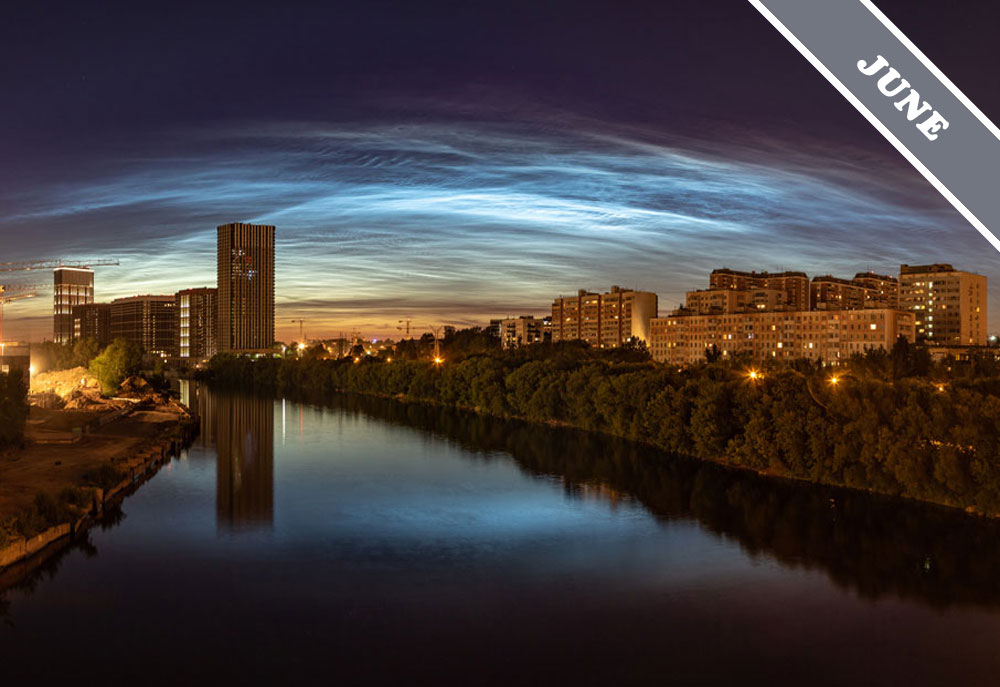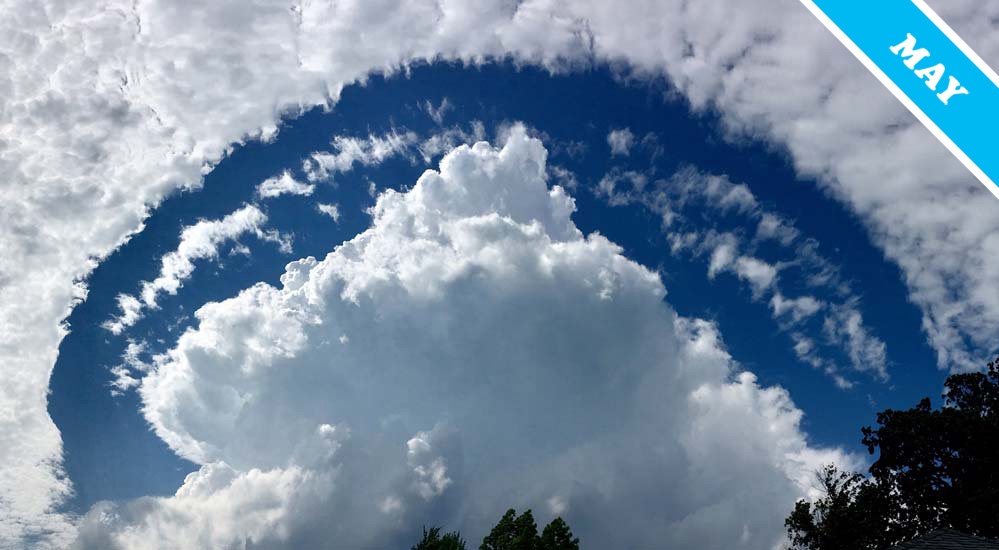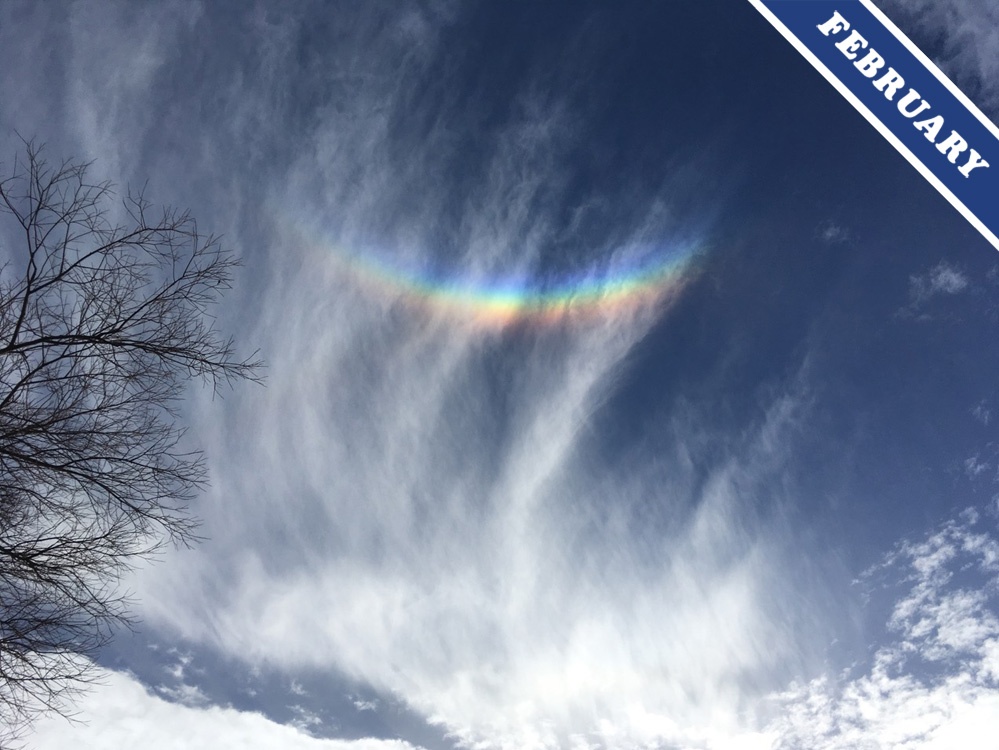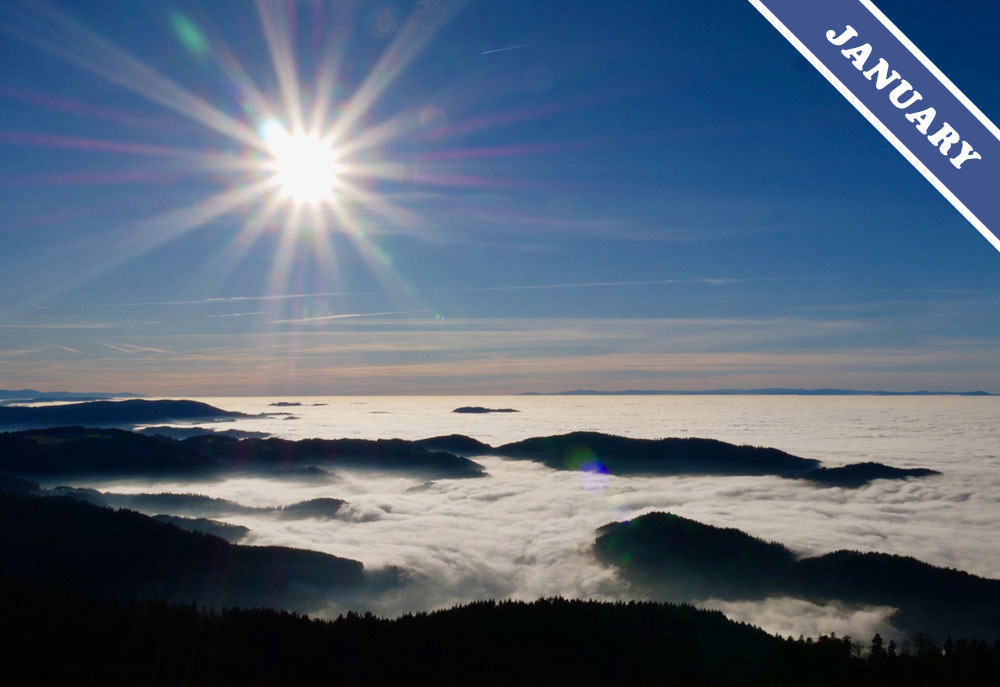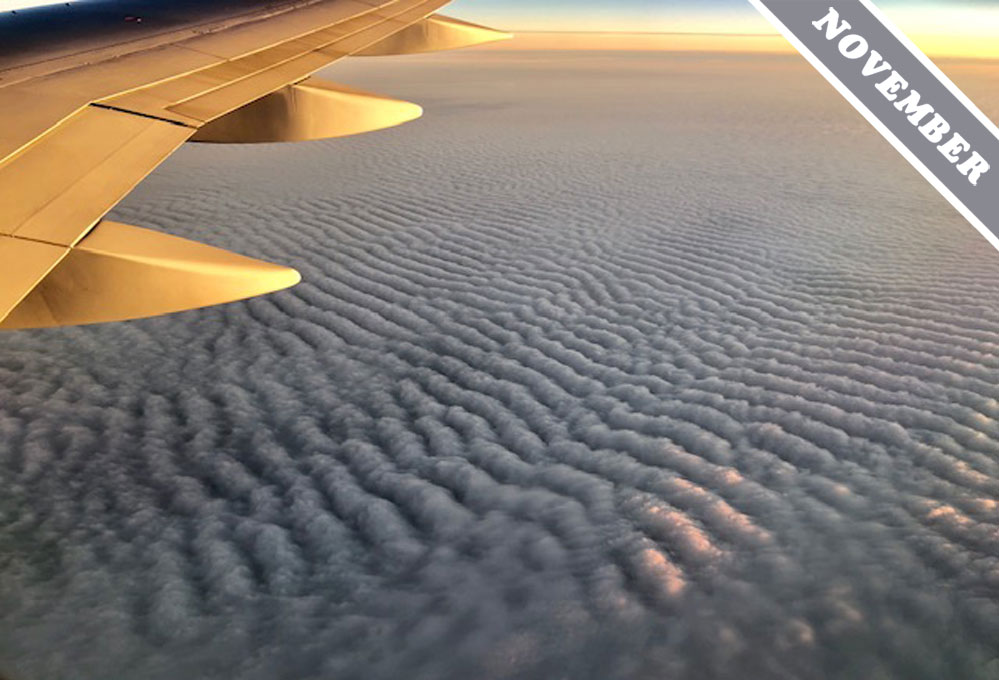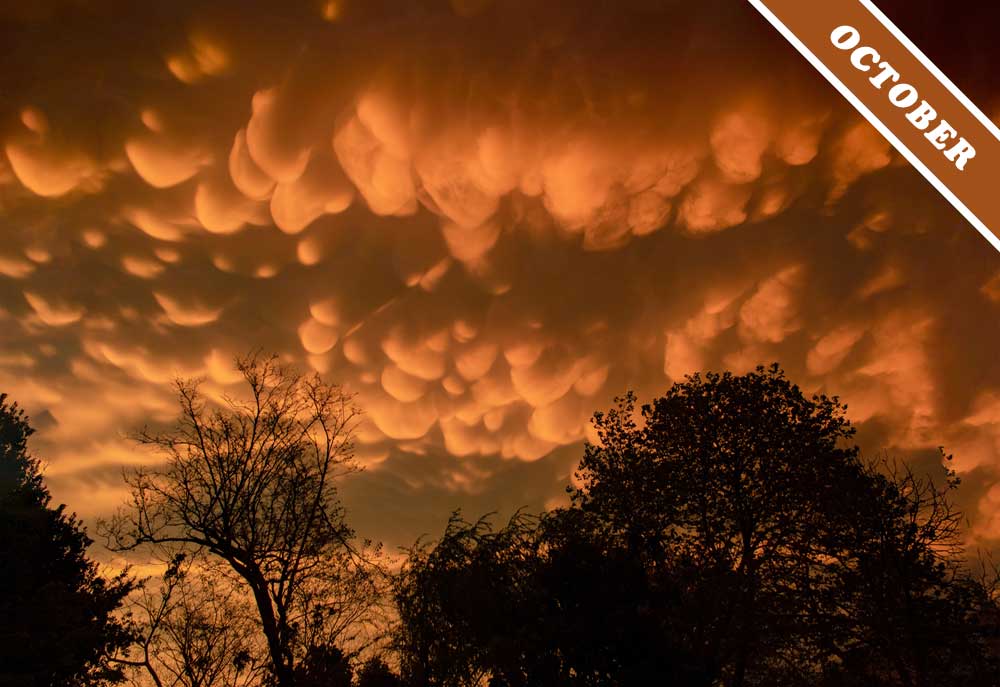Mother-of-pearl formations spotted over Iceland are the Cloud of the Month for February. Welcome to the high-altitude world of nacreous clouds…
Category: Cloud of the Month
Every month, we choose one of our favourite photographs from the Cloud Gallery to become our Cloud of the Month.
In Cloud of the Month for January, we’re beamed up by the flying saucer of the cloud world…
When Claudio Cattaneo (Member 13,236) took to the ski slopes of Crans-Montana, Switzerland early on a cold December morning, he was greeted by a glittering display of halo phenomena…
Stratocumulus is a low, clumpy cloud layer that plays a vital role on our planet…
In Cloud of the Month for October, we explain the trails of precipitation known as virga and what they reveal about water in our atmosphere…
Mamma cloud features appear as lobes hanging from the underside of a cloud layer. Find out more in Cloud of the Month…
Let us introduce you to the ‘summertime halo’…
This long horizontal tube of cloud is a rare formation that develops in two very different circumstances. Here comes Cloud of the Month for July, the roll cloud…
We chase rainbows over Bavaria, Germany and discover there’s more to rainbows than meets the eye…
The tablecloth cloud isn’t the only dramatic formation produced by the mountains around Cape Town in South Africa…
These rings of delicate pastel colours around the Sun can be caused by the tiny particles of a cloud…
It’s all happening in this cloudscape spotted by Jan Curtis over Wyoming, US. This is a big sky with a big name that reveals the invisible airflows high above…
Cloud of the Month for January shows the twisting heart of a mighty storm system…
What happens when a cloud blurs a rainbow? Find out in the Cloud of the Month for December…
What looked like a cloud tsunami inundated the skies over Singapore earlier this month. We explain what is was in November’s Cloud of the Month…
In October’s Cloud of the Month, we show how to cook up a nourishing cloud dish…
Why does everyone love a sunset? We think we’ve worked it out…
It’s rare, it’s fleeting, it’s a fluctus cloud…
Cloud of the Month for July is a Cumulonimbus with no interest in social distancing…
Anyone for night Cloudspotting?
A mysterious, rippling veil of gossamer-like clouds hangs high in the sky over the Netherlands. Forming right up at the fringes of Space, these clouds are the very highest in our atmosphere. They’re known as noctilucent clouds, and they form in the mesosphere at altitudes of around 50 miles (85 kilometres), which is far above the troposphere – the part where usual ‘weather’ clouds form, in the lower 10 miles or so (15 kilometers). It is the extreme altitude of noctilucent clouds that ensures they are the only type of cloud you can spot in the middle of the night even when there’s no Moon to light them. Even when the Sun is well below the horizon and rest of the sky is in the Earth’s shadow, these super-high clouds still catch its light, shining out in neon blue hues against the darkened sky. This is why their name means ‘night-shining’ in Latin.
Now is the start of the season for spotting noctilucent clouds in the Northern Hemisphere because they only form during the summer. June always seems to be a good month for them. This is when their ice crystals are more likely to appear because, counterintuitively, summer is when the mesosphere is at its coldest. When temperatures are warmer down on the ground, the lower atmosphere is warmed too and the troposphere expands, causing it to push the upper atmospheric layers upwards, which leads to cooling of the mesosphere. Typically, you can only spot noctilucent clouds from latitudes (whether in the Northern or Southern Hemisphere) that are higher than 50 degrees latitude. This explains their more formal name, polar mesospheric clouds. Any higher than about 70 degrees, however, and the summer sky will never become dark enough for their subtle forms to be visible.
If you are at the right latitude during the right time of year, look out when the lower sky is clear for these ghostly streaks of pale blue shining among the stars, late in the night or in the early hours. Who said cloudspotting needs to end when the Sun goes down?
Noctilucent clouds spotted over Katwijk, Netherlands by Mark McCaughrean (Member 32,672).
Have you spotted a Noctilucent Cloud?
If you’ve managed to photograph one of these extremely high night-shining clouds, why not contribute your image to a new Noctilucent Cloud Showcase that we’re creating in collaboration with our friends at Go Stargazing? We plan to bring together the best noctiulcent cloud images as a new resource for nighttime cloudspotters.
Find out how the steady hand of the wind draws undulatus clouds in May’s Cloud of the Month…
There is a special and profound relationship between mountains and clouds, as we explain in April’s Cloud of the Month…
Asperitas clouds spotted over Stallion Springs, California, US are the Cloud of the Month for February…
We don’t appreciate all clouds alike. In fact, the pyrocumulonimbus cloud is one that we positively dislike. Find out why in the Cloud of the Month for January…
These points of light spotted by David Richards (Member 47,917) on either side of the sunrise not only make for a captivating winter scene, they also tell us the exact shape of the tiny crystals of ice glittering in the morning air. Spoiler alert: they don’t look like Christmas decorations! All is revealed in Cloud of the Month for December…
Why do some clouds look solid, while others look translucent? We reveal all in Cloud of the Month for November…
Cloud of the Month for October, spotted during ‘the blue hour’, is all about the time of day…
Eyebrows will be raised about the classification of September’s Cloud of the Month…
Cloud of the Month for August is the rarest of the ten main cloud types…
July’s Cloud of the Month is a rainbow wheel of fortune. Find out more…
June has seen numerous spottings of ‘noctilucent clouds’ across Europe and North America. Why might these rare night-shining clouds, which form right up at the fringes of Space, be starting to appear more and more frequently…?
May’s Cloud of the Month shows how a Cumulus with big ambitions can develop a cloud halo…
Waterfalls and water rises in the Cloud of the Month for April…
Cloud of the Month for March has mysteries blowin’ in the wind…
February’s Cloud of the Month is a smile in the sky…
Cloud of the Month for January is an ocean of Stratus – best viewed from above, and with time on your hands…
To counter the December season of excess, we have selected as Cloud of the Month the simplest, most understated of formations…
For November’s Cloud of the Month, we show why the window seat is the only seat fit for a cloudspotter…
October’s Cloud of the Month are comforting mamma clouds over Argentina…
In September’s Cloud of the Month, we reveal the mysteries of cookie-cutter clouds…


